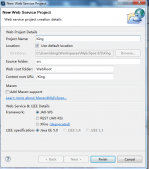1. 動(dòng)態(tài)sql
動(dòng)態(tài)sql是mybatis中的一個(gè)核心,什么是動(dòng)態(tài)sql?
動(dòng)態(tài)sql即對(duì)sql語句進(jìn)行靈活操作,通過表達(dá)式進(jìn)行判斷,對(duì)sql進(jìn)行靈活拼接、組裝。
mybatis的強(qiáng)大特性之一便是它的動(dòng)態(tài) sql。如果你有使用 jdbc 或其他類似框架的經(jīng)驗(yàn),你就能體會(huì)到根據(jù)不同條件拼接 sql 語句有多么痛苦。拼接的時(shí)候要確保不能忘了必要的空格,還要注意省掉列名列表最后的逗號(hào)。有些時(shí)候,sql語句where條件中,需要一些安全判斷,例如按某一條件查詢時(shí)如果傳入的參數(shù)是空,此時(shí)查詢出的結(jié)果很可能是空的,也許我們需要參數(shù)為空時(shí),是查出全部的信息。使用oracle的序列、mysql的函數(shù)生成id。這時(shí)我們可以使用動(dòng)態(tài)sql。利用動(dòng)態(tài) sql 這一特性可以徹底擺脫這種痛苦。通常使用動(dòng)態(tài) sql 不可能是獨(dú)立的一部分,mybatis 當(dāng)然使用一種強(qiáng)大的動(dòng)態(tài) sql 語言來改進(jìn)這種情形,這種語言可以被用在任意的 sql 映射語句中。動(dòng)態(tài) sql 元素和使用 jstl 或其他類似基于 xml 的文本處理器相似。mybatis 采用功能強(qiáng)大的基于 ognl 的表達(dá)式來消除其他元素。
mybatis中用于實(shí)現(xiàn)動(dòng)態(tài)sql的元素主要有:
1、if和where
2、choose(when,otherwise)
3、trim
4、set
5、foreach
就拿上一篇博文中對(duì)用戶的綜合查詢一例來說:
|
1
|
select * from user where user.sex = #{user.sex} and user.username like '%${user.username}%' |
假如這個(gè)user是null咋整?或者user.sex或者user.username為null呢?所以更嚴(yán)謹(jǐn)?shù)淖龇☉?yīng)該是在執(zhí)行這個(gè)語句之前要先進(jìn)行判斷才對(duì),確保都不為空,那么我再去查詢。這就涉及到了mybatis中的動(dòng)態(tài)sql了。
在mybatis中,動(dòng)態(tài)sql可以使用標(biāo)簽來表示,這很類似于jstl表達(dá)式,我們可以將上面的sql語句改成動(dòng)態(tài)sql,如下:
|
1
2
3
4
5
6
7
8
9
10
11
|
<select id="finduserlist" parametertype="mybatis.po.userqueryvo" resulttype="mybatis.po.user"> select * from user <!-- where可以自動(dòng)去掉條件中的第一個(gè)and --> <where> <if test="user!=null"> <if test="user.sex!=null and user.sex!=''"> and user.sex = #{user.sex} </if> <if test="user.username!=null and user.username!=''"> and user.username like '%${user.username}%' </if> </if> </where></select> |
上面的代碼很好理解,主要就是加了一些判斷,條件不為空,才進(jìn)行查詢條件的拼接,讓mybatis動(dòng)態(tài)的去執(zhí)行。那么在測(cè)試代碼中,我們可以故意的將user.sex不賦初值,就可以看到查詢的結(jié)果是不一樣的。
2. sql片段
那么現(xiàn)在還有個(gè)問題,如果好幾個(gè)statement都需要這樣做,而且動(dòng)態(tài)sql部分都一樣,這就會(huì)導(dǎo)致一些代碼的重復(fù),所以如果遇到這種情況,我們就應(yīng)該抽取,動(dòng)態(tài)sql也可以抽取,我們可以將動(dòng)態(tài)的這部分sql抽取成sql片段,然后在具體的statement中引用進(jìn)來即可。如下:
|
1
2
3
4
5
6
7
8
|
<sql id="query_user_where"> <if test="user!=null"> <if test="user.sex!=null and user.sex!=''"> and user.sex = #{user.sex} </if> <if test="user.username!=null and user.username!=''"> and user.username like '%${user.username}%' </if> </if></sql> |
id是給該sql片段起個(gè)名字而已,內(nèi)部就是上面的where動(dòng)態(tài)部分,然后我們將上面原來的動(dòng)態(tài)部分改成對(duì)這個(gè)sql片段的引用,如下:
|
1
2
3
4
5
6
7
|
<select id="finduserlist" parametertype="mybatis.po.userqueryvo" resulttype="mybatis.po.user"> select * from user <where> <!-- 引用sql片段的id,如果refid指定的id不在本mapper文件中,需要在前面加上namespace --> <include refid="query_user_where"></include> <!-- 還可以引用其他sql片段 --> </where></select> |
3. foreach
還有個(gè)問題:如果我們要向sql傳遞數(shù)組或list該咋整呢?mybatis使用的是foreach解析。為了模擬這個(gè)場(chǎng)景,我們將上面的查詢改成多個(gè)id查詢,有兩種查詢方式:
|
1
|
select * from user where id=1 or id=12 or id=17select * from user where id in(1,12,17) |
首先有一點(diǎn)很明確,既然要使用多個(gè)id進(jìn)行查詢,那么多個(gè)id肯定要作為參數(shù)傳進(jìn)來,所以存儲(chǔ)多個(gè)id的list需要放到userqueryvo中作為一個(gè)屬性,這點(diǎn)很好理解,所以我們先在userqueryvo中增加這個(gè)屬性:
|
1
2
|
//傳入多個(gè)idprivate list<integer> ids; |
然后我們修改usermapper.xml中的sql片段(還是寫在sql片段中),如下:
|
1
2
3
4
5
6
7
8
9
10
11
12
13
14
|
<sql id="query_user_where"> <if test="user!=null"> <if test="user.sex!=null and user.sex!=''"> and user.sex = #{user.sex} </if> <if test="user.username!=null and user.username!=''"> and user.username like '%${user.username}%' </if> </if> <if test="ids!=null"> <!-- 使用右邊的sql拼接:and (id=1 or id=12 or id=17) --> <foreach collection="ids" item="user_id" open="and (" close=")" separator="or"> id=#{user_id} </foreach> </if></sql> |
下面簡單介紹一下這個(gè)foreach中相關(guān)屬性的作用:
collection:指定輸入對(duì)象中的集合屬性,這里就是這個(gè)ids。 item:表示每個(gè)遍歷生成的對(duì)象,自己起個(gè)名兒,在foreach體中使用。 open:開始遍歷時(shí)拼接的sql串。 close:結(jié)束遍歷時(shí)拼接的sql串。 separator:遍歷的兩個(gè)對(duì)象中需要拼接的sql串。
我們測(cè)試一下,然后看下控制臺(tái)打印出來的sql就很容易理解了。測(cè)試程序:
|
1
2
3
4
5
6
7
8
9
10
11
12
13
14
15
16
17
18
19
20
21
22
23
24
|
@testpublic void testfinduserlist() throws exception { sqlsession sqlsession = sqlsessionfactory.opensession(); //創(chuàng)建usermapper對(duì)象,mybatis自動(dòng)生成mapper代理對(duì)象 usermapper usermapper = sqlsession.getmapper(usermapper.class); //創(chuàng)建包裝對(duì)象,設(shè)置查詢條件 userqueryvo userqueryvo = new userqueryvo(); user user = new user(); //由于這里使用動(dòng)態(tài)sql,如果不設(shè)置某個(gè)值,條件不會(huì)拼接在sql中 user.setsex("男"); user.setusername("倪升武"); //傳入多個(gè)id list<integer> ids = new arraylist<integer>(); ids.add(1); ids.add(12); ids.add(17); userqueryvo.setids(ids); userqueryvo.setuser(user); //調(diào)用usermapper的方法 list<user> list = usermapper.finduserlist(userqueryvo); system.out.println(list);} |
看下控制臺(tái)打印出的sql:
|
1
|
select * from user where user.sex = ? and user.username like '%倪升武%' and ( id=? or id=? or id=? ) |
注意一個(gè)細(xì)節(jié):在mybatis中,如果輸入的是integer或者int類型的0,上面那個(gè)if判斷標(biāo)簽返回的是false,也就是說,即使非空非'',也不會(huì)拼接標(biāo)簽體中的sql。
所以mybatis自動(dòng)的將多個(gè)id拼接到了sql中。那么另外一個(gè)sql的實(shí)現(xiàn)就不再贅述了,跟上面的一樣,唯一不同的就是sql片段部分,如下:
|
1
2
3
|
<!-- 使用右邊的sql拼接:and id in(1,12,17) --><foreach collection="ids" item="user_id" open="and id in(" close=")" separator=","> #{user_id}</foreach> |
總結(jié):
以上就是這篇文章的全部內(nèi)容了,希望本文的內(nèi)容對(duì)大家的學(xué)習(xí)或者工作具有一定的參考學(xué)習(xí)價(jià)值,如果有疑問大家可以留言交流,謝謝大家對(duì)服務(wù)器之家的支持。
原文鏈接:https://yq.aliyun.com/articles/667279

















